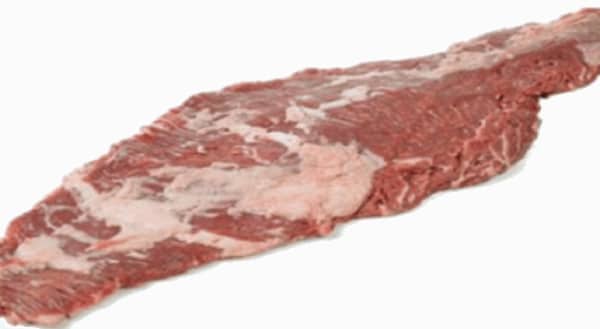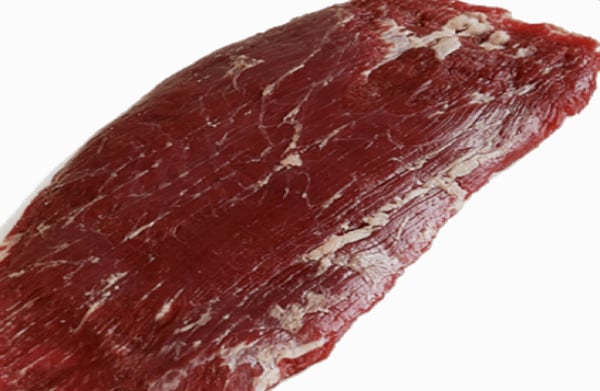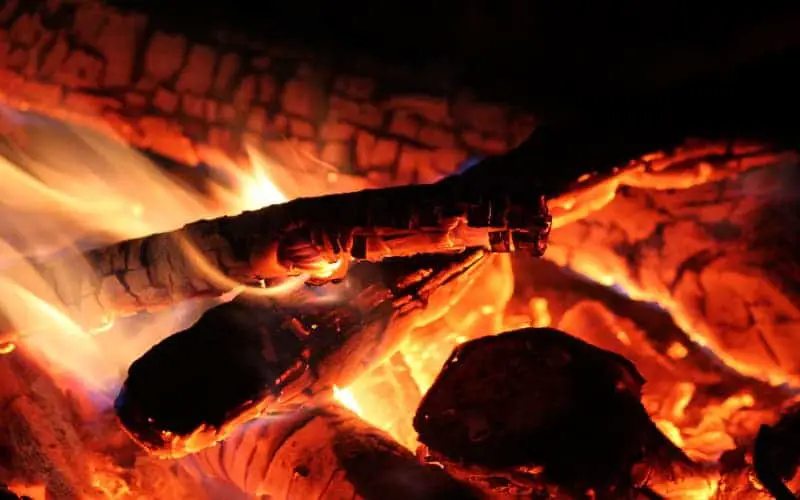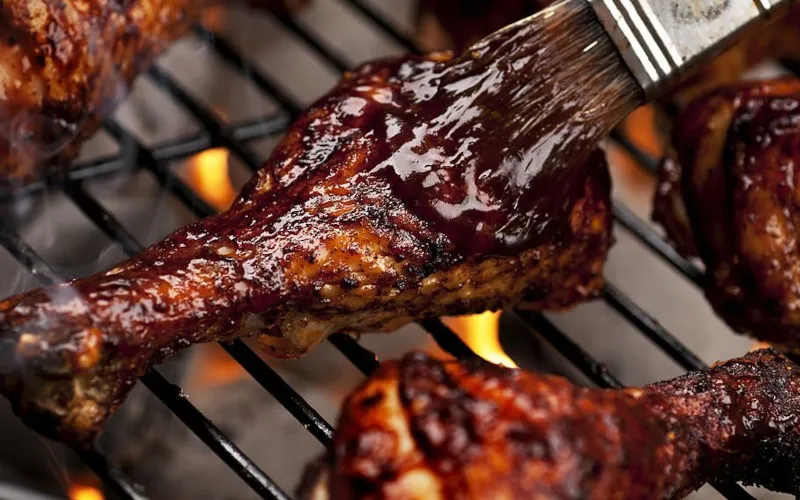Sometimes, you may wonder which is the better cut of meat: flap meat or flank steak. They are both reasonably lean, with slightly leaner flank steak, and both are pretty tough. You need a tenderizer to break down the fibers in both cuts and then marinate them for several hours.
After marinating, you should cook them quickly over high heat. After cooking, let the meat rest briefly before slicing it thinly against the grain. You should slice flank steak a bit thinner than flap meat.
This article will discuss the critical differences between these beef cuts. We’ll also provide some tips on how to cook them both. So whether you’re a beef lover or just looking to add more variety to your dinner rotation, read on for all you need to know about flap meat vs. flank steak!

What is Flap Meat?

Flap meat is a cut of beef that comes from the abdominal muscles of the cow. It gets its name because it looks like a flap of meat, as it is an extended, thin cut. Flap meat is typically sold at a lower cost than other cuts of beef because it can be tough and chewy. However, it can be a delicious and economical choice when adequately prepared for steak.
What is Flank Steak?

Flank steak is a cut of meat that comes from an animal’s lower abdominal region. It is a long and thin cut of beef with a thick grain that runs across it. Unlike other cuts, flank steak is best enjoyed when marinated or cooked quickly over high heat, as this helps to break down its tough fibers and makes it much more tender to eat.
When slicing flank steak, it is important to do so thinly and against the grain to avoid tough, chewy pieces of meat.
How Cook Both Flap Meat and Flank Steak?
These steak uses come from the beef’s underbelly and lower chest area. They are full of flavorful, well-marbled meat that is relatively lean.
When purchasing, look for:
- Flap meat: Also called sirloin tips, this steak is long, flat, and triangular. It is well-marbled and relatively lean.
- Flank steak: This steak is wider than flap meat and has a long, uniform shape. It also has some marbling and is relatively lean.
To cook both steaks, start by seasoning the meat with salt and pepper. Then, heat a pan over medium-high heat and add a bit of oil. When the pan is hot, add the steak and cook for 3-5 minutes per side, depending on the thickness of your steak.
During this time, make sure to sear the meat well to lock in all that delicious flavor!
Once the steak is cooked to your liking, remove it from the pan and let it rest for a few minutes. This will help ensure that your steak is juicy and flavorful. Serve with your favorite sides, and enjoy!
What is the Difference Between Flap Meat and Flank Steak?
Both flank and flap steak are cuts of beef that are relatively lean and somewhat tough. However, there are some key differences between them.
The following are the key differences between flap meat and flank steak:
1. The Beef Cut Location
This is the main difference between flap meat and flank steak. Flap meat comes from the bottom sirloin primal, located near the cow’s hindquarter. Flank steak comes from the abdominal area of the cow, which is usually located below the ribs.
2. Taste and Texture
Taste is defined by the amount of fat content in each cut. Flap meat has a slightly higher fat content than flank steak, giving it a more tender texture and a richer flavor. This makes it a great choice for sous vide or slow cooking. Flank steak is typically leaner than flap meat, making it ideal for slicing thinly and serving on a sandwich or stir-fry.
3. Cooking Methods
Due to its leaner nature, flank steak is best suited for quick cooking methods like grilling, pan-frying, or searing. Flap meat often benefits from longer cooking and low-heat techniques like braising and stewing. It is likely tough and chewy if you try to cook flap meat quickly.
4. Price
Flank steak is usually less expensive than flap meat since it is a more popular cut of beef. However, flap meat can sometimes be sold at a lower price point. So, it depends on where you shop and what’s on sale.
5. Cutting Process
The beef must be sliced against the grain for maximum flap meat and flank steak tenderness. For flap meat, this is relatively easy since the muscle fibers run in one direction. Flank steak can be more challenging to slice against the grain since the muscle fibers run in multiple directions.
6. Best Use
Flap meat is best suited for dishes that require longer cooking times and low-heat techniques. Flank steak is best for recipes that require high-heat cooking. You can use either cut of meat for stir-frys, but flap meat will become more tender the longer it cooks.
Flank steak is also well suited for grilling, while flap meat can become dry and tough when cooked using this method.
7. Nutrition
There are a few key differences between flap meat and flank steak regarding nutritional value. This can be an important consideration for many people who follow specific dietary plans or try to eat healthily.
Flap meat is generally higher in calories and fat than flank steak. It also contains a higher proportion of saturated fat. However, it is also a good source of protein and iron.
On the other hand, Flank steak is lower in calories and fat. It is also leaner meat, with less saturated fat. In addition, flank steak is a good source of B vitamins and iron. Overall, both cuts of beef have nutritional benefits and drawbacks, so it is best to look at the individual situation and dietary needs when deciding which one to choose.
8. Shelf Life
Flank steak has a shorter shelf life than flap meat since it is a lean cut of beef. This means it will spoil more quickly and is best consumed within 3-5 days of purchase. On the other hand, flap meat has a slightly longer shelf life of 5-7 days due to its higher fat content.
However, both types of meat should be stored in the refrigerator and cooked within a week for optimal flavor and quality. Flap meat has a slight advantage over flank steak when it comes to shelf life. However, both types of meat should be consumed within a week for the best flavor and quality.
Flap Meat vs Flank Steak: Which is Better?
Choosing between the two comes down to personal preference, but go with flank steak if you’re looking for a slightly healthier option. If you’re looking for more tender and flavorful meat, you might prefer flap meat.
Ultimately, the best way to determine which meat is right for you is to experiment with both and see which you like better.
Just remember to consider the key differences between them to choose the right one for your dish.
How to Cook Flap Meat?
Flap meat is a type of steak that you can marinate before cooking. It has a similar texture to flank, skirt, and hanger steak. You can cook it quickly over high heat. Then, let it rest for 5 minutes, covered in foil. After that, you can slice the meat against the grain to get tender results.
Ingredients:
- Steak (flap, skirt, or hanger)
- Olive oil
- Salt
- Pepper
Instructions:
- First, you need to prepare your steak by trimming any excess fat.
- Next, you will need to season the meat with salt and pepper.
- Then, you will need to heat your grill to high heat.
- Once the grill is hot, add some olive oil to the steak.
- Then, place the steak on the grill and cook for about two minutes per side.
- Once you have finished cooking the steak, remove it from the grill and let it rest for five minutes.
- After the steak has rested, you can slice it against the grain to get tender results.
- Serve with your favorite sides, and enjoy!
How to Grill Flank Steak?
Flank steak is a type of beef that is lean and tough but still has a lot of flavors. You can make it more tender by marinating it. It is best-cooked medium rare and sliced thinly across the grain of the meat. When you do this, it will practically melt in your mouth.
Ingredients:
- A flank steak (at least one pound)
- A marinade (your favorite recipe or store-bought)
- Skewers (if using wooden skewers, soak them in water for at least 30 minutes before grilling)
- Grill
Instructions:
- If you are using a marinade, put the steak in it now and let it sit for at least an hour, up to overnight. If you are short on time, you can skip this step, but your steak will be less flavorful.
- Next, prepare your grill. If you use a charcoal grill, light the coals and let them burn until they are covered in gray ash. If you are using a gas grill, turn it on to high heat.
- While the grill is heating up, remove the steak from the marinade and discard the marinade. Place the steak on a plate and season it with salt and pepper.
- If you use wooden skewers, soak them in water for at least 30 minutes before grilling. This will prevent them from burning.
- Place the steak on the grill and cook for about eight minutes per side or until it reaches the desired level of doneness. Remove from grill and let rest for five to ten minutes.
- To thinly slice the steak, place it on a cutting board and hold it steady with one hand. Use the other hand to slice against the grain of the meat. Serve immediately. Enjoy!
You can serve flank steak in a number of ways. One popular method is to slice it thinly and serve it over a salad. Another is to slice it and serve it with grilled vegetables. It is also deliciously served on its own with a simple dipping sauce.
Dipping Sauce:
- ½ cup olive oil
- ¼ cup balsamic vinegar
- Salt and pepper to taste
Directions:
- Whisk together all ingredients in a small bowl.
Frequently Asked Questions
Is Flap Meat Better Than Skirt Steak?
Both flap and flank are cuts of meat from the lower abdominal region of a cow. However, they are very different in taste and texture. They are also different in terms of how they are best cooked.
Flap meat is a lot fattier than skirt steak. It also has a lot of connective tissue, which means it needs to be cooked for a longer time at lower temperatures to break down the connective tissue and make the meat tender. Skirt steak is very lean and can be cooked quickly over high heat. It also has a strong beefy flavor that many people enjoy.
Is Flap Meat Good for Fajitas?
Flap meat is a good choice for fajitas because of its fattiness. The fat will help keep the meat flavorful and juicy as it cooks, giving you a delicious result. You can also marinate flap meat before cooking to add more flavor and moisture.
However, you need to cook the meat carefully so that it doesn’t become tough and dry. Searing the meat over high heat will help keep it juicy, but you should finish cooking it in a covered pan or on the grill to prevent it from drying out.
Is Flap Meat Good for Grilling?
Flap meat is a great choice for grilling because it can be marinated in any flavor. Whether you like sweet and spicy flavors or savory marinades, flap meat can be prepared using whatever flavor combinations you desire. Additionally, it grills up juicy and tender, giving you a delicious result every time.
How To Marinate Flank Steak for Tenderness?
To marinate the flank steak for tenderness, you will need to mix your favorite marinade ingredients and coat the steak in it. After that, you will need to refrigerate it for several hours or even overnight. When you are ready to cook the steak, simply remove it from the marinade and cook it according to your preference.
Should Flank Steak Be Marinated?
Flank steak does not need to be marinated, but it can benefit. Marinating the steak will help tenderize it and infuse it with additional flavor, resulting in a more delicious and juicy steak. Additionally, marinating the steak will help keep it moist as it cooks, preventing drying out.
What is the Difference Between Flank Steak and Flap Meat?
The main difference between flap meat and flank steak is that flap meat is fattier, which helps to keep it juicy and flavorful when cooking. On the other hand, Flank steak is leaner and tends to be more tender. As a result, those looking for a leaner and less fatty cut of meat are often preferred.
Ultimately, flap meat and flank steak will come down to your personal preference when making fajitas.
How Long Does Flap Meat Last in The Fridge?
Flap meat will last in the fridge for up to 3 days. If you plan on storing it for longer, it is best to freeze it. When ready to cook it, be sure to thaw the meat in the refrigerator overnight. This will keep the meat from spoiling and give you a delicious, tender result when it is cooked.
How Long Does Flank Steak Last in The Fridge?
Storing flank steak in the fridge will last for up to 3 days. This can be done by storing it in its original packaging, or if you’ve bought it without any packaging, then pop it into a covered dish or container.
As long as it is kept at a cool temperature and you’ve protected it from sunlight exposure, your flank steak should retain its quality and flavor for up to 3 days.
How Can I Make Sure That Flank Steak Is Cooked to The Perfect Level of Doneness?
There are a few things that you can do to ensure that your flank steak is cooked to the perfect level of doneness. First, it is important to use a meat thermometer to check your steak’s internal temperature. For medium-rare, you should aim for an internal temperature between 130-135˚F. For medium, aim for 145˚F, and medium-well 170˚F.
Additionally, you should let the steak rest for a few minutes after removing it from the grill or pan, which will allow the juices to redistribute throughout the meat. This will also help prevent it from overcooking.
Finally, you can also cut into the steak to check for doneness. This will give you some visual cues but should not be used on its own as an indication of doneness.
Conclusion
If you are a steak lover, you know that there are many different cuts and cooking methods available to help you get the perfect result. Whether you prefer flap meat or flank steak, both are delicious and perfect for grilling up juicy and tender.
To ensure that your meat is cooked to the perfect level of doneness, be sure to use a meat thermometer. Additionally, letting the steak rest for a few minutes after cooking will help to prevent it from overcooking and help the juices redistribute throughout the meat.
Ultimately, flap meat and flank steak will come down to your personal preference.





